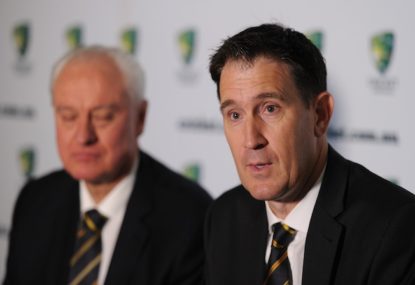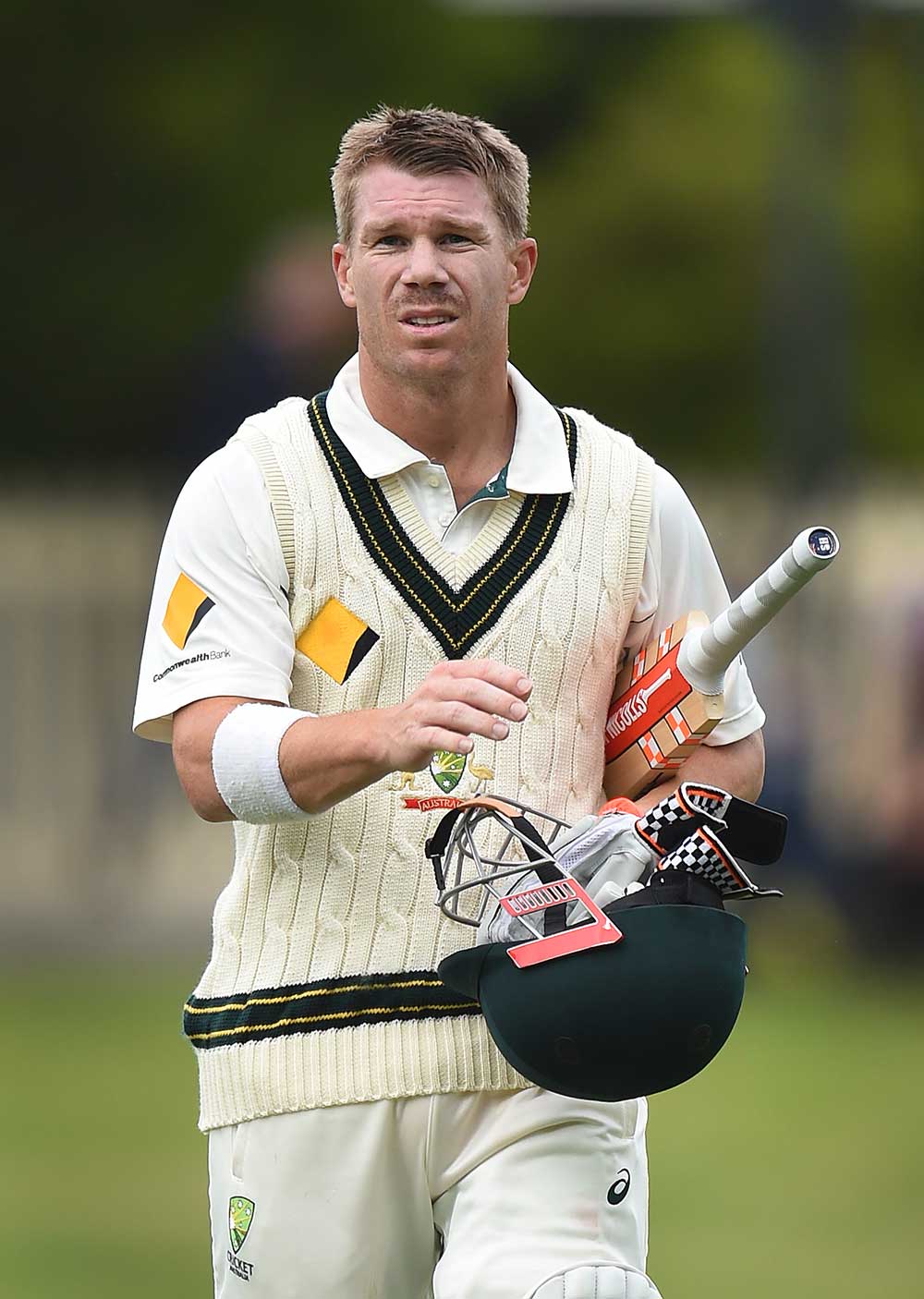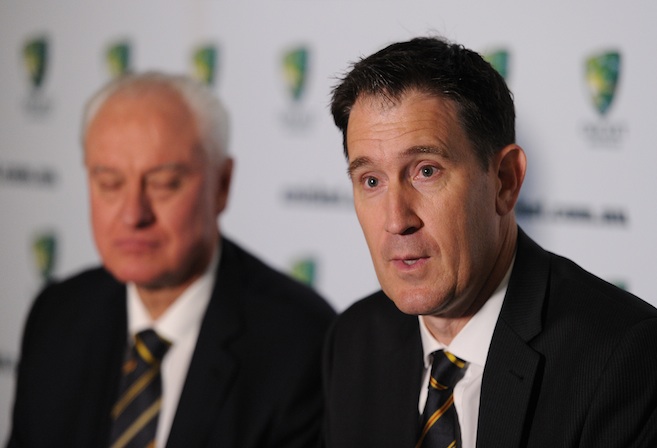WATCH: Freddy Flintoff's son dominates County 2nds game batting exactly like his dad
Check out some of the short-arm pull shots from Rocky Flintoff!

Alongside universal healthcare, gun control and Mexican border walls, the player pay dispute raging in Australia between Cricket Australia (CA) and the Australian Cricket Association (ACA) is one that many Brits find hard to comprehend.
Perhaps the comparison is a little exaggerated, but the ongoing fist fight is one which is viewed with a mixture of awe, intrigue and even a sense of relief, safe as we are in the knowledge that this is an issue that will likely never reach our island.
Nothing quite like the ACA exists in England.
There is the PCA, the Professional Cricketers’ Association, but their focus tends towards the pastoral side, their function more a supportive one than of active intervention. They play an important role, offering guidance to individual players in contract negotiations, but the idea of collective action, and the formation of an overarching Memorandum of Understanding, or MOU, is one confined to Australia alone.
There is the TEPP, the Team England Player Partnership, an exclusive group open only to contracted male England players, but the majority of professional cricketers – those jobbing fellas on the county circuit, not to mention the handful of women in possession of England contracts – negotiate individually.
Perhaps that’s the way it should be; demure and understated, a stereotype of English identity, not wanting to cause a commotion, nor undue fuss. For fuss is what is unravelling under CA’s watch, and one helluva lot of it too.
Only this fuss didn’t really register in the Northern Hemisphere, not, that was until David Warner alluded to the CA-ACA negotiations’ potential impact on the Ashes. Only then did we cock our heads, our own interests suddenly threatened. How very human of us.

(AAP Image/Dave Hunt)
Still, maybe this relief, that this is on the whole an irrelevant spat happening to other people in a land far, far away, is misplaced. That the ACA, a minnow to CA’s clout and resources, is refusing to succumb to CA’s ultimatum that the country’s professional cricketers depart from the player revenue-sharing model shows that someone, somewhere, is holding a powerful sporting body to account. Perhaps we English should be having a closer inspection of our own backyard.
“Power corrupts; absolute power corrupts absolutely,” lamented the 19th century historian, Lord Acton, of the doctrine of papal infallibility. Few will see James Sutherland, CA’s enduring CEO, as a papal figure, yet while in a position of power, it only follows that he and CA are doing what they can to retain it; ultimatums have been issued, and businessmen thrust in to ensure that this end goal, an irreversible shift in the model used to pay for a player’s livelihood and future livelihood is achieved.
Both Gideon Haigh and Mike Atherton recently argued, eloquently as ever, that CA only finds itself facing such stern opposition because they are too business-like, too process-driven and too far removed from the intricate relationship between professional athletes and the public they serve.
Yet there is a compelling argument that the opposite is, in fact, true – that cricket’s governing bodies, including the ECB and CA, are in fact not business-like enough.
This is because accountability in sports governance is notoriously poor; one only need look at the issues facing FIFA, the IAAF or even British Cycling to understand the opacity with which these organisations operate. It is beyond anything contemplated in normal business practice. Banks, financial service firms and other corporate bodies are far more closely regulated – and far more readily admonished when they fail to abide.
All of the ‘big three’ boards – the ECB, CA and the BCCI, Indian cricket’s governing body – hold governance records few companies would tolerate, not least their shareholders, or the public.
By no means an exhaustive list, but examples of this bad governance include executive positions filled by the same individuals for decades at a time with only cursory scrutiny (James Sutherland has been CA’s CEO for almost 16 years), directors rewarded with similar uncontested longevity, the ability to seamlessly segue from a board’s Chairman to a newly constructed role of President (the ECB’s Giles Clarke), or even sanctioning an individual’s right to own a franchise governed by the very board which they chair (which was the least of the governance issues facing N Srinivasan, as it turned out).
The checks and balances that these bodies must, or must not, adhere to are written on a blurry canvas, etched in shades only of grey. Both CA and ECB are companies limited by guarantee, removing both the liability of shareholders, of which there are none, and its members. It’s a common model for not-for-profit organisations, whose intent may be noble, but which leaves greater opportunity for exploitation and operation without due scrutiny.

(AAP Image/Julian Smith)
Not only is accountability a concern, but competition – or lack thereof – too. Sports governing bodies, by their very nature, hold monopolies over their area of practice – the sports which they govern. This is a concept unheard of in any conventional business.
It could, however, soon change; the growth of domestic franchise competitions, beyond the control of any national governing body, means that these bodies’ overarching grip on players may soon be a thing of the past.
Late last year, the European Commission sent a ‘Statement of Objections’ to the International Skating Union, the ISU, after finding that the ISU’s eligibility rules prevented skaters from competing in a number of events, specifically those not approved by the ISU.
The Commission’s preliminary view was that such rules “restrict the athletes’ commercial freedom unduly”, raising concerns that the ISU’s “eligibility rules are not aimed at preserving high standards in sport but rather serve to maintain the ISU’s control over speed skating.”
Control. That’s the key word. That’s what the governing bodies want to retain, but in a landscape that they know is changing to their detriment.
Such a case draws strong parallels to the power struggle within cricket, with domestic T20 leagues springing up the world over. It is this concept too – of control, of power – which lies at the heart of CA’s stance to date.
The amount that top international players may be set to achieve in the short term is almost irrelevant, a sweetener even, for what is more highly sought is the power and control that CA will gain should they oust the majority of players from any revenue-share. If (and when) they do, they hold the purse strings indefinitely.
Far from rejoicing in the knowledge that this is an issue irrelevant to England, the ongoing negotiations should act as a timely reminder that there is much still to be improved, on the accountability, visibility and power invested in England’s own board.
After all, good governance needs strong opposition, and we must ensure that that opposition exists.